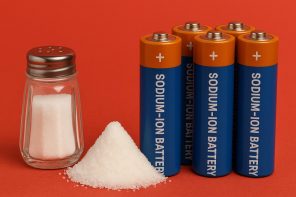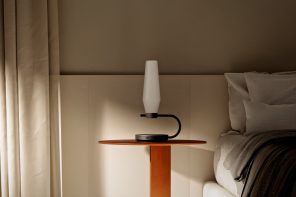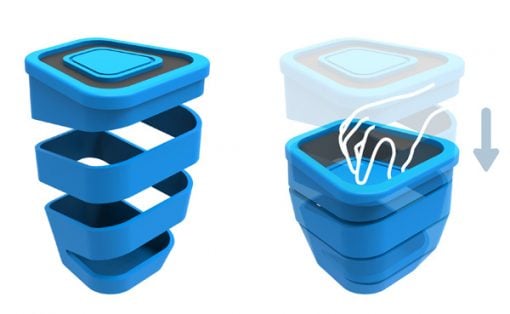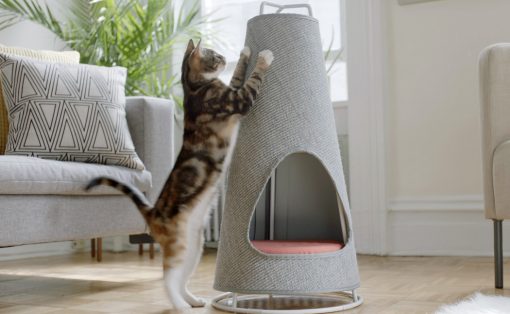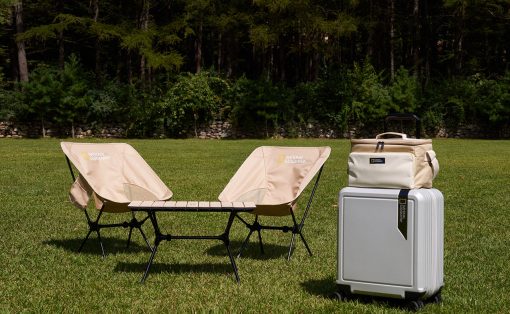Sourced sustainably from cork oak trees, cork is a renewable material favored in architecture and interior design for its porous texture, softness, and lightweight nature. Its versatility extends to various applications like flooring, walls, furniture, and home accessories, complementing materials such as metal, wood, and marble, and it adds a distinctive touch to any design. The design industry is progressively acknowledging cork’s value, especially considering its eco-friendly extraction method that allows tree barks to naturally regenerate. Also, cork’s ability to reduce plastic usage while offering limitless creative possibilities has firmly established its role in the design field
Designer: MB Cork
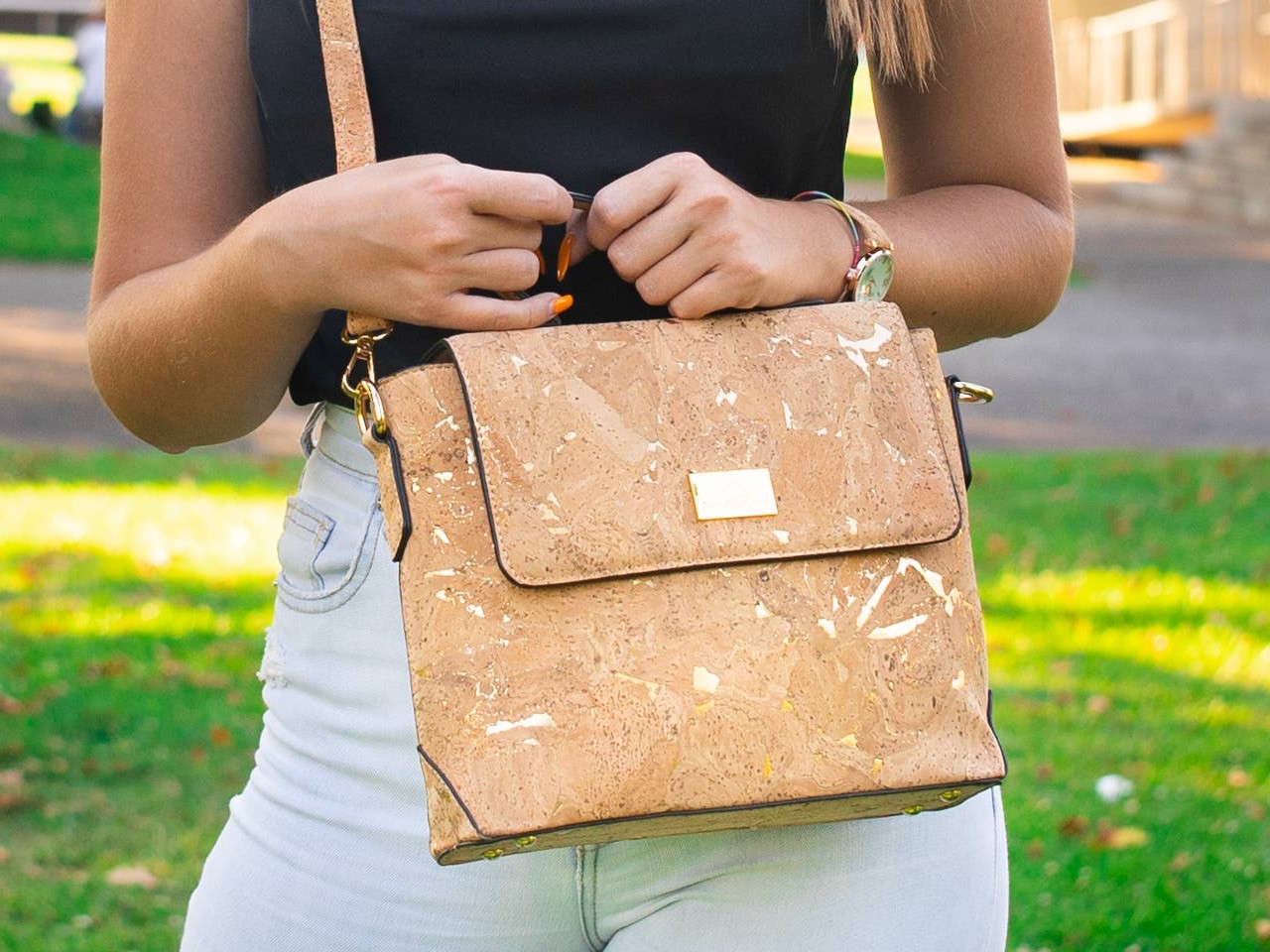
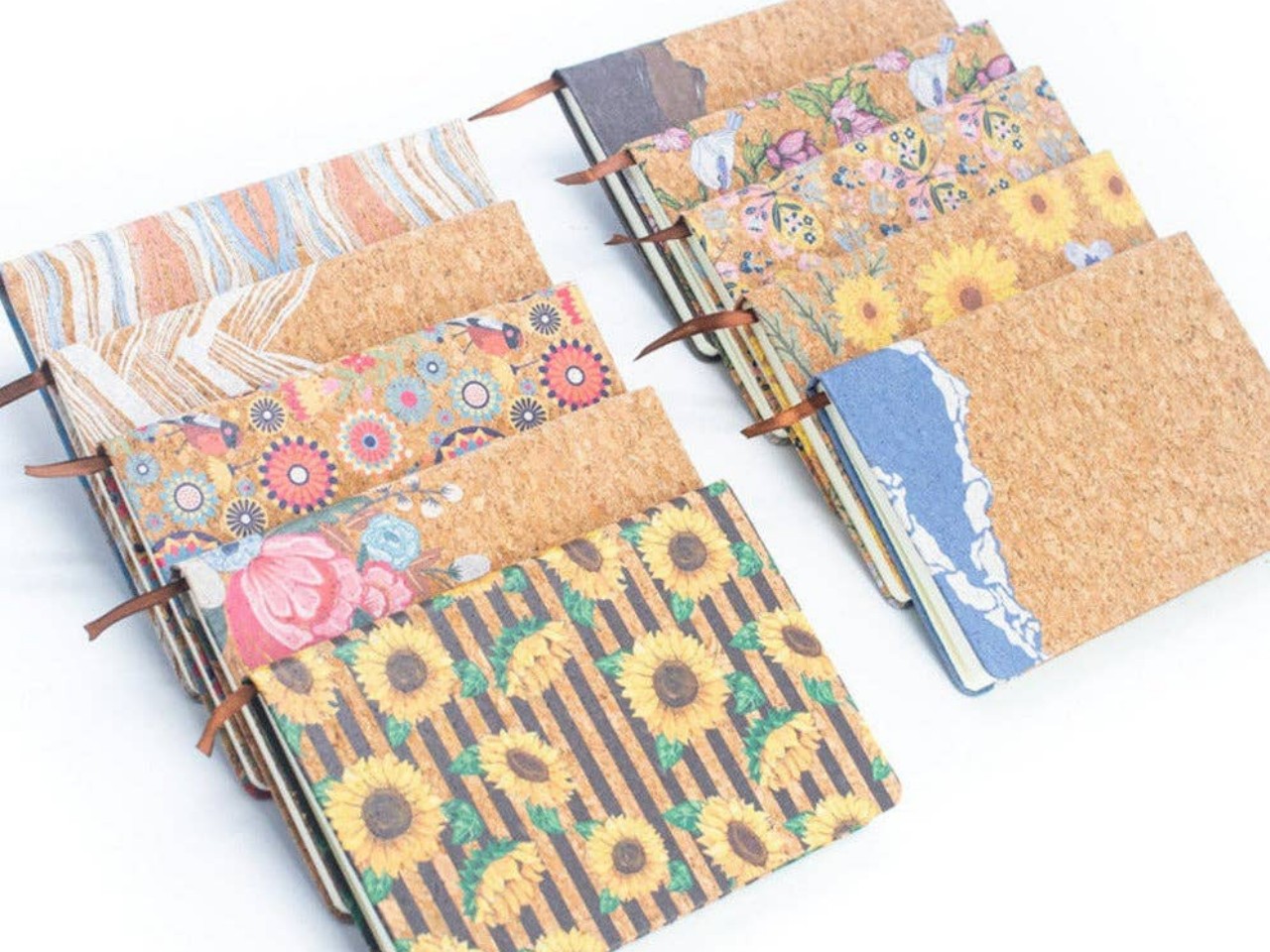
What are the advantages of using Cork?
• Renewable
Cork products have a minimal environmental impact, harvested without felling trees. With no waste in manufacturing and recyclability, cork is highly sustainable. Re-harvesting every 14 years makes it rapidly renewable. Demand drives the cultivation of more cork oak trees, promoting a healthier environment.
• Anti-microbial
Cork products promote good health as it is naturally antimicrobial. Cork resists mold, mildew, and pests while its antistatic surface reduces dust absorption. Low in volatile organic compounds, cork improves indoor air quality.
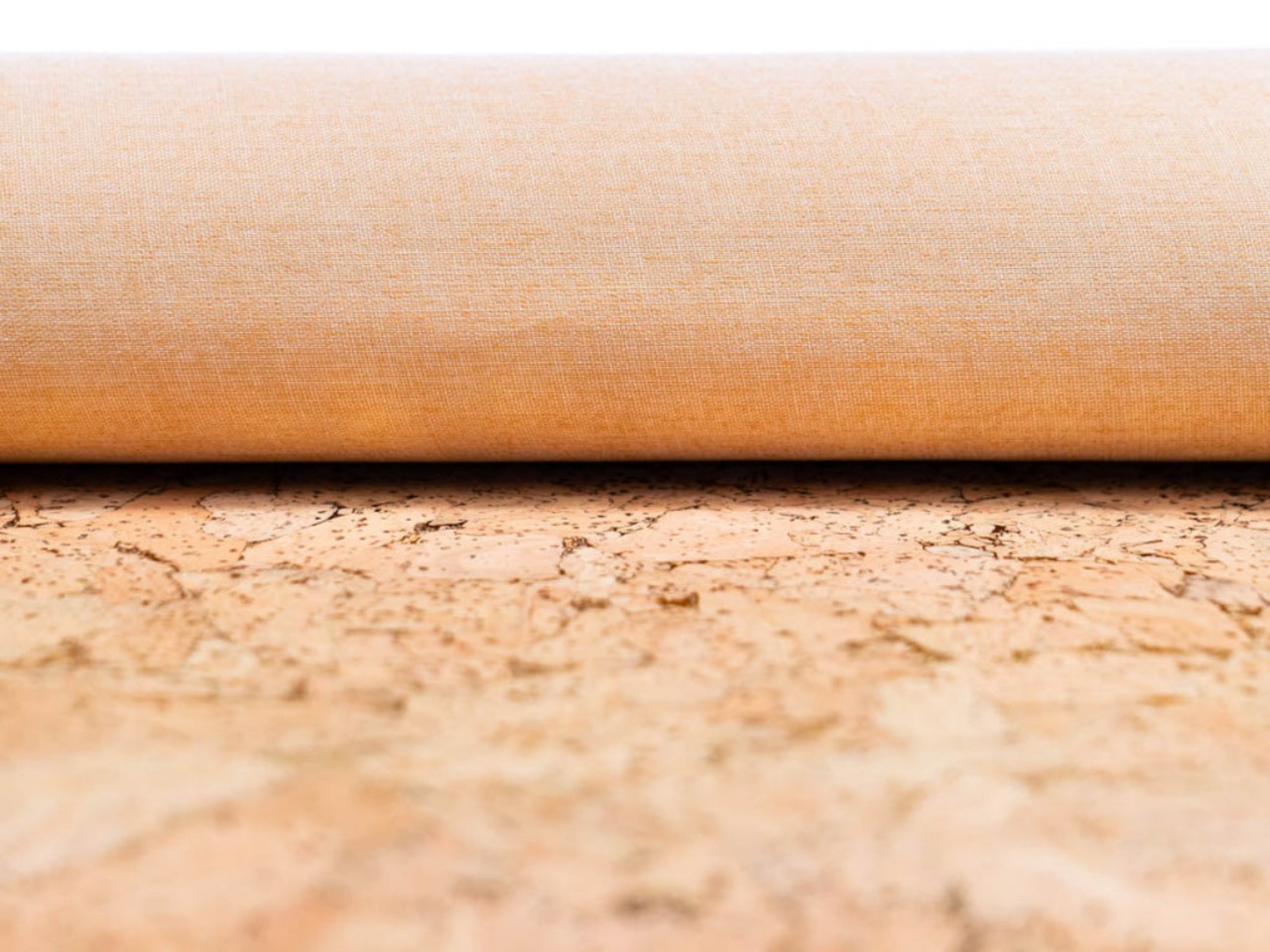
• Sustainable
Cork, a natural material, is fully biodegradable and recyclable, offering endless possibilities for reuse.
• Durable
Cork is commonly used in household items like flooring and bath mats due to its exceptional durability. With resistance to cracking, abrasions, and moisture, cork products can last up to 30 years or more with proper care. Cork maintains its pristine condition under furniture weight, making it a highly long-lasting material.
• Water Resistant
Cork’s high resistance to moisture, oxidation, and decay, due to its suberin and ceroid content, renders it impermeable to liquids and gases. This durability ensures that cork ages gracefully without deteriorating, making it an ideal option for environments with high humidity levels, like bathrooms, kitchens, or tropical climates.

Image courtesy of: FabrikaPhoto
• Provides Thermal and Acoustic Insulation
Cork doesn’t let heat, sound, or vibrations pass through easily because it traps gases in tiny compartments that are sealed off from each other. Wall cork panels offer these benefits and are available in interesting geometric patterns that make rooms look unique.
• Ensures Comfort
Cork offers remarkable comfort due to its cellular structure featuring microscopic gas pads, providing excellent shock absorption. Its soft texture, along with a temperature akin to that of the human body makes it a very cozy material. Note that chairs with cork seats are designed to provide warmth and softness, ensuring seating comfort.
What are the disadvantages of using Cork?
Cork is a comfortable and eco-friendly material as hand-harvesting contributes to its cost. Additionally, cork offers a limited color range, primarily in shades of beige and brown. However, it’s important to note that cork surfaces can be susceptible to damage from pets’ nails, and prolonged exposure to sunlight may cause fading over time, as with many natural materials.
How to incorporate cork into Interior Design?
The different applications of cork include:
1. Furniture
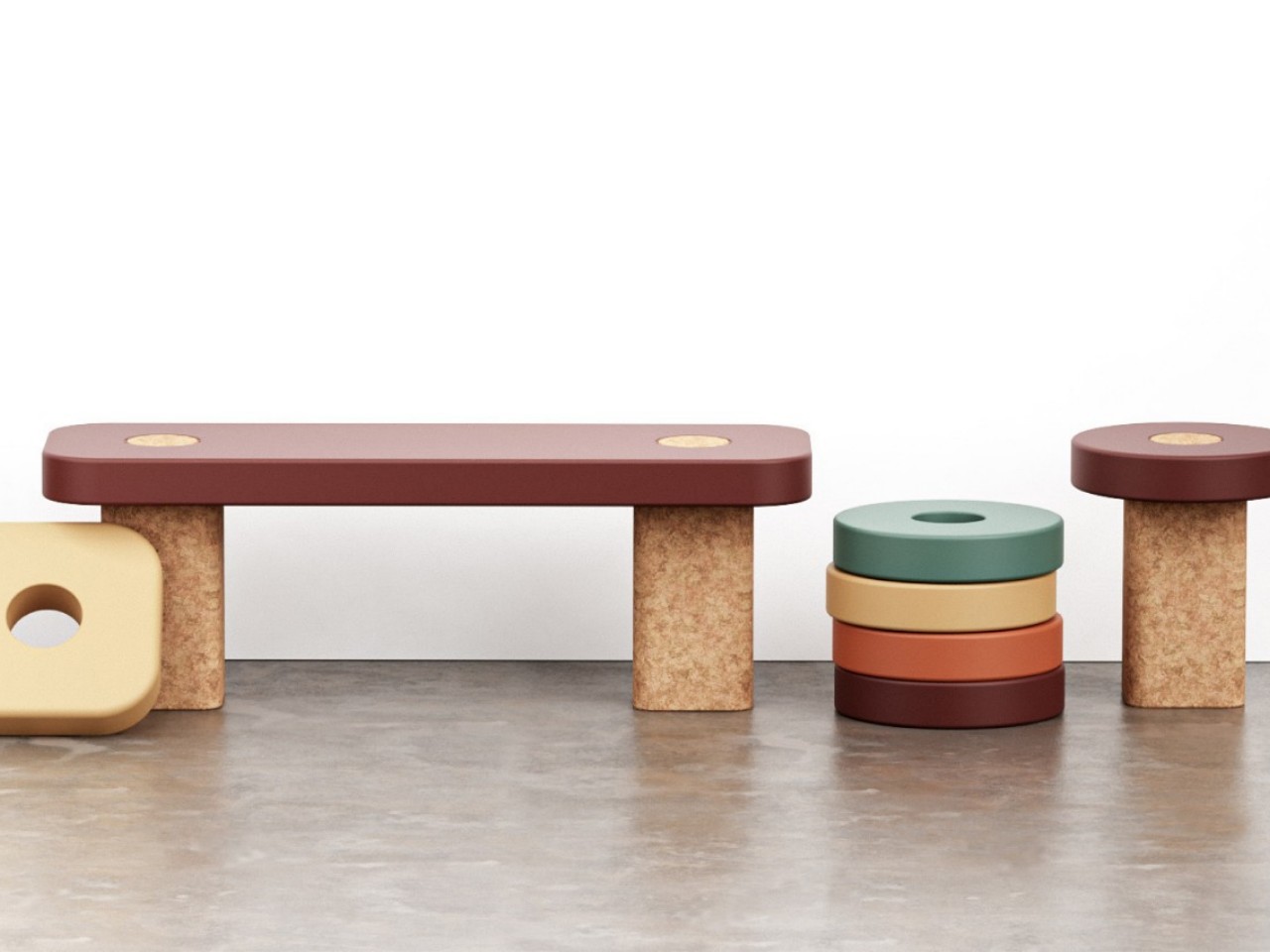
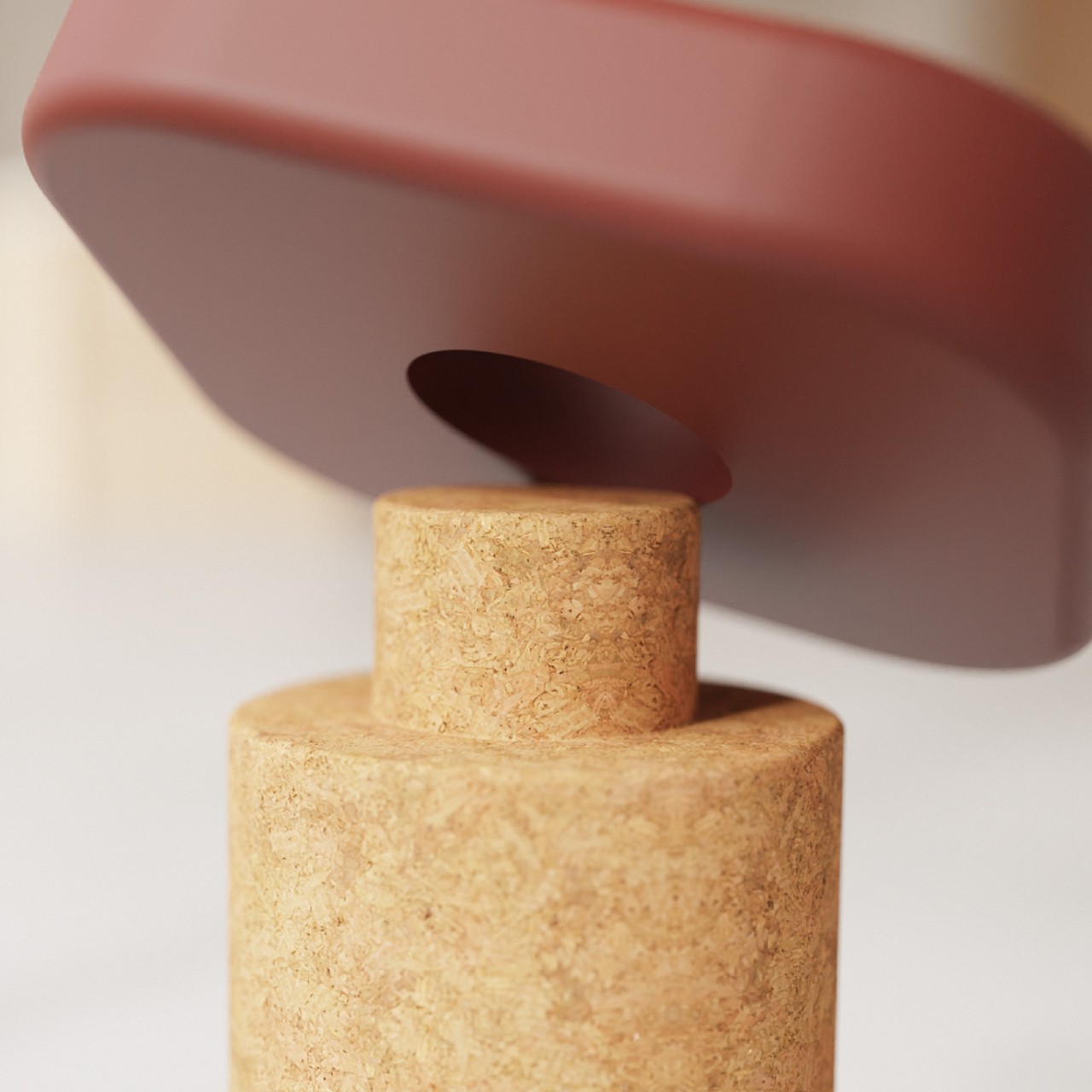
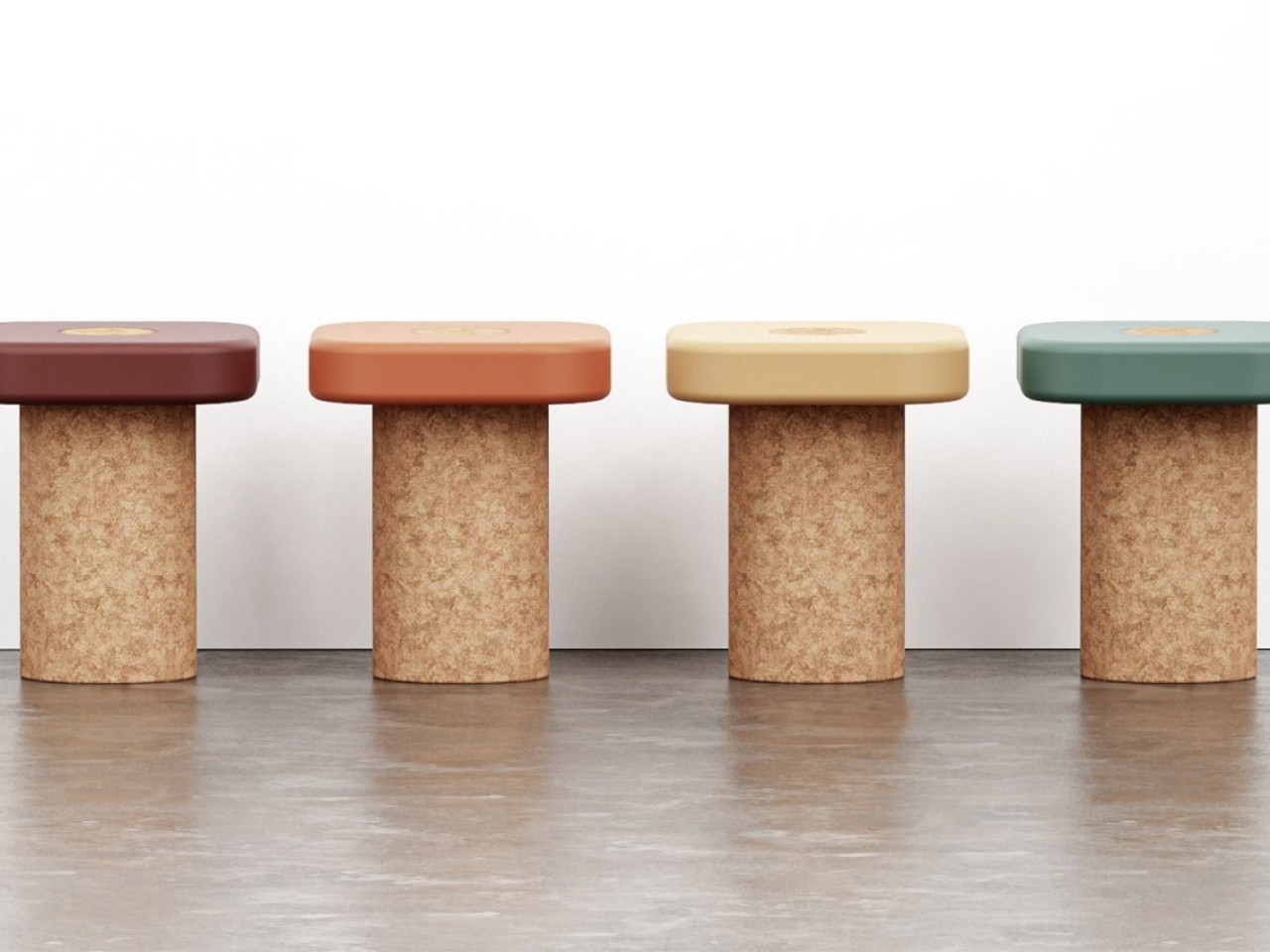
Designers: Erika Avery, Stu Cole
Seating is crucial in daily life, often seen in various forms in public spaces. However, predicting seating needs can be challenging. This stool concept offers a sustainable solution by transforming two stools into a bench and back, as required. The design centers on a sturdy cork column, offering stability and sustainability. The removable seat, with a center hole, can vary in shape and material. This adaptable design minimizes waste and meets changing needs effectively.
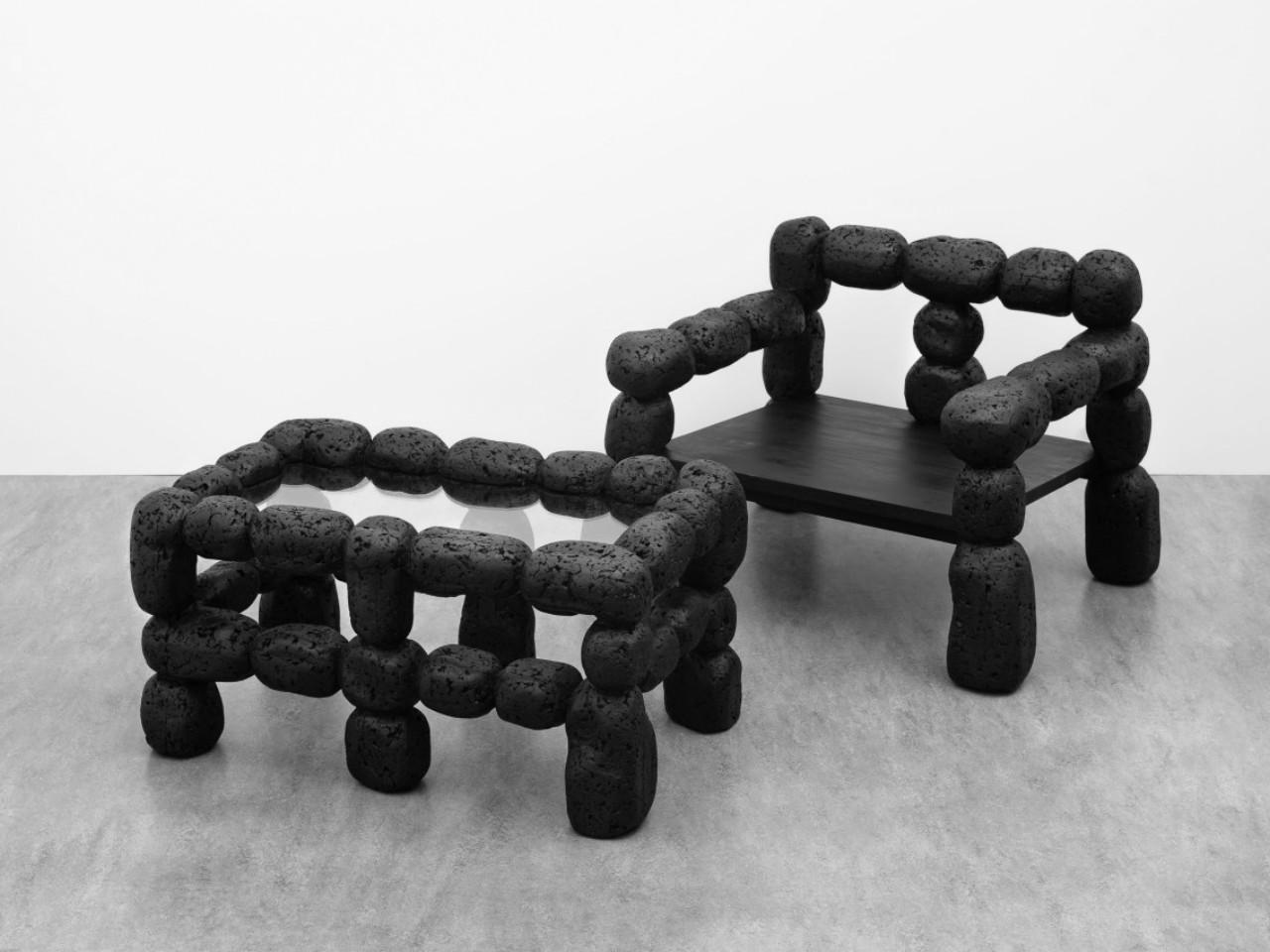
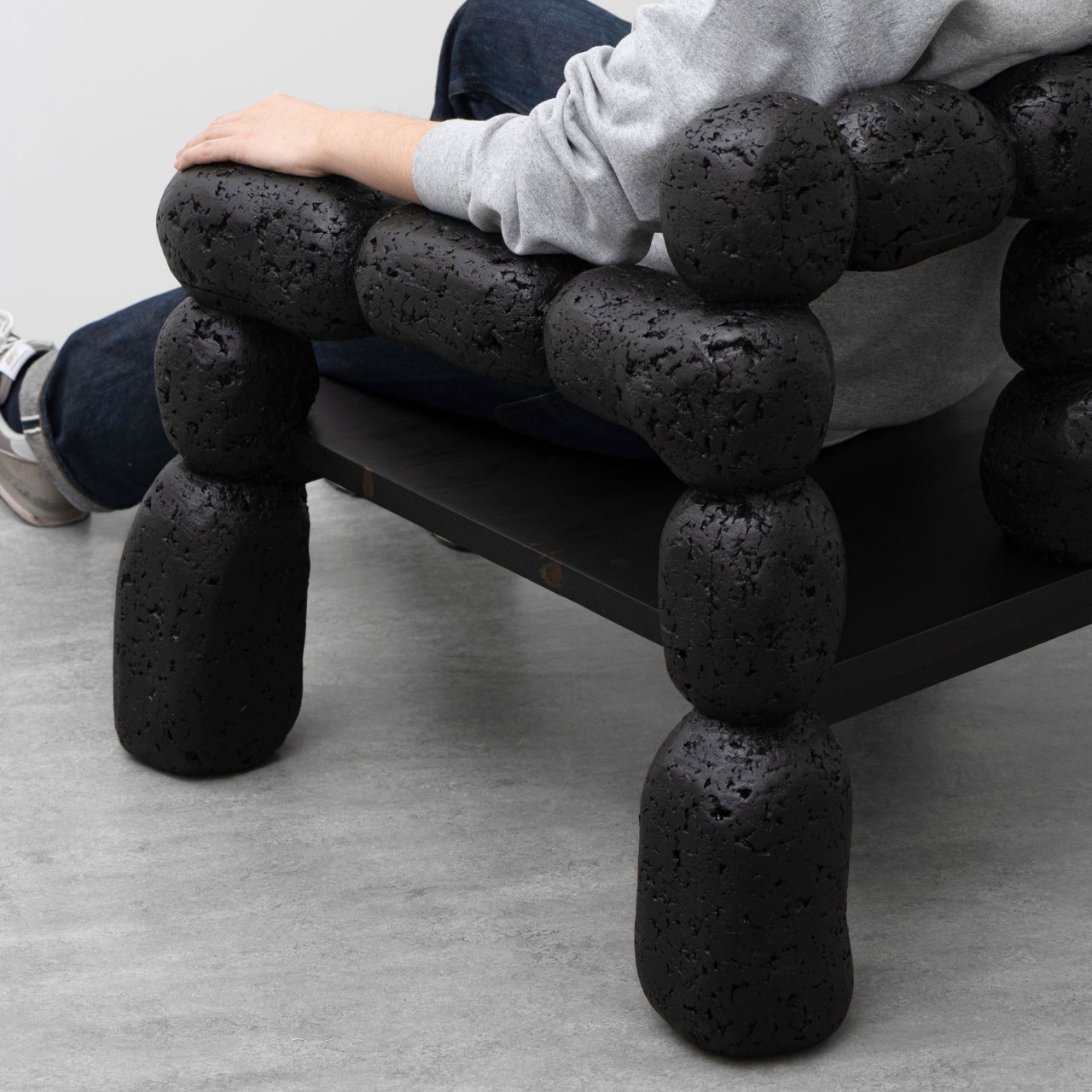
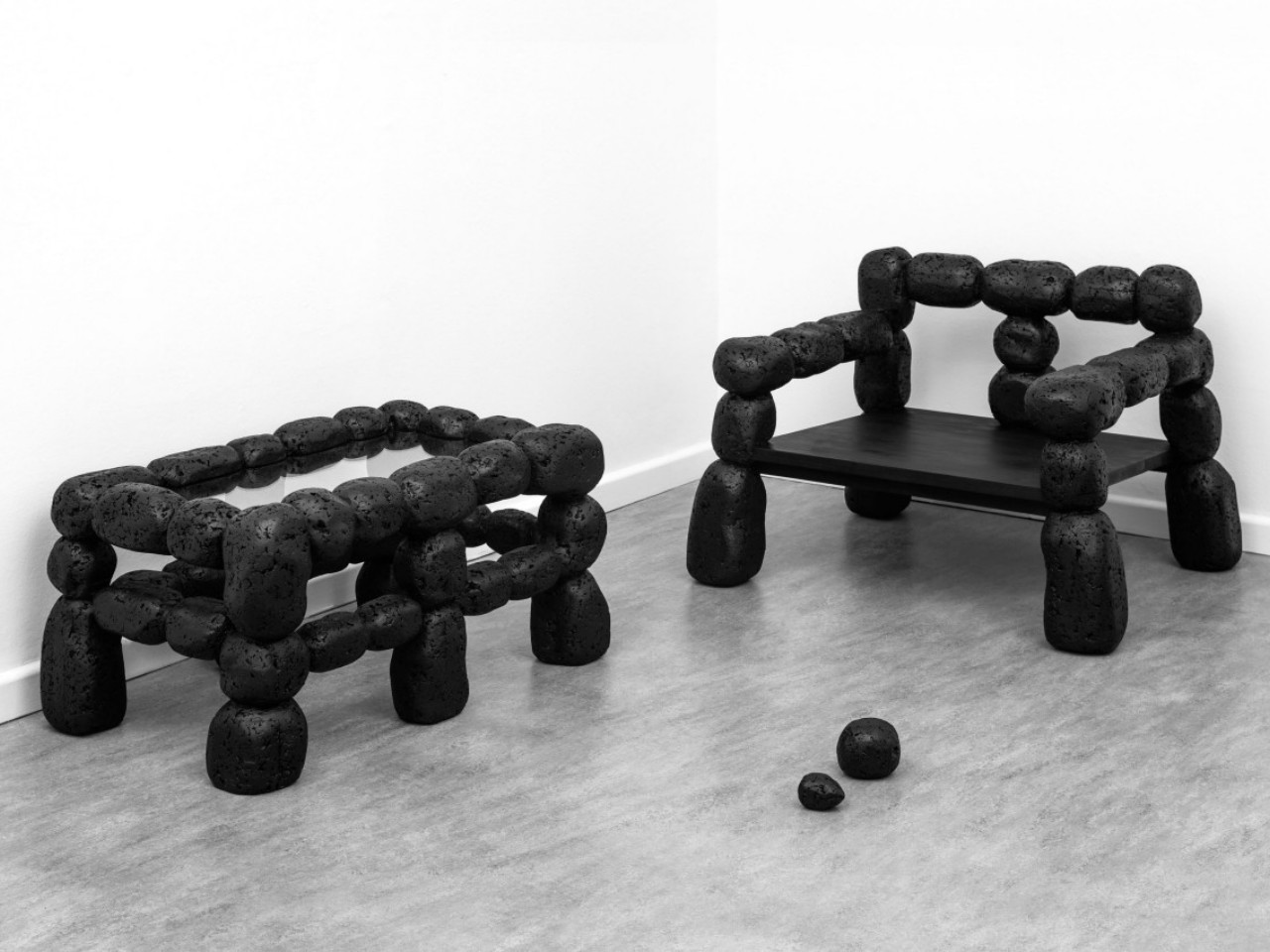
Designer: ( ae ) offices
The DOL furniture collection draws inspiration from the rugged volcanic rocks of Jeju Island in South Korea. Crafted from the outer bark of cork oak trees, each piece replicates the raw, uneven appearance of these natural formations. Handcrafted with care, the collection offers a unique blend of comfort, stability, and charm. Despite its unconventional material choice, cork provides lightweight, impact-absorbing, and insulating properties. Wooden profiles enhance structural support, while layers of wood oil and waxes add texture and character. Sustainable and visually captivating, DOL furniture embodies the beauty and resilience found in nature’s aftermath, making it a distinctive addition to any space.
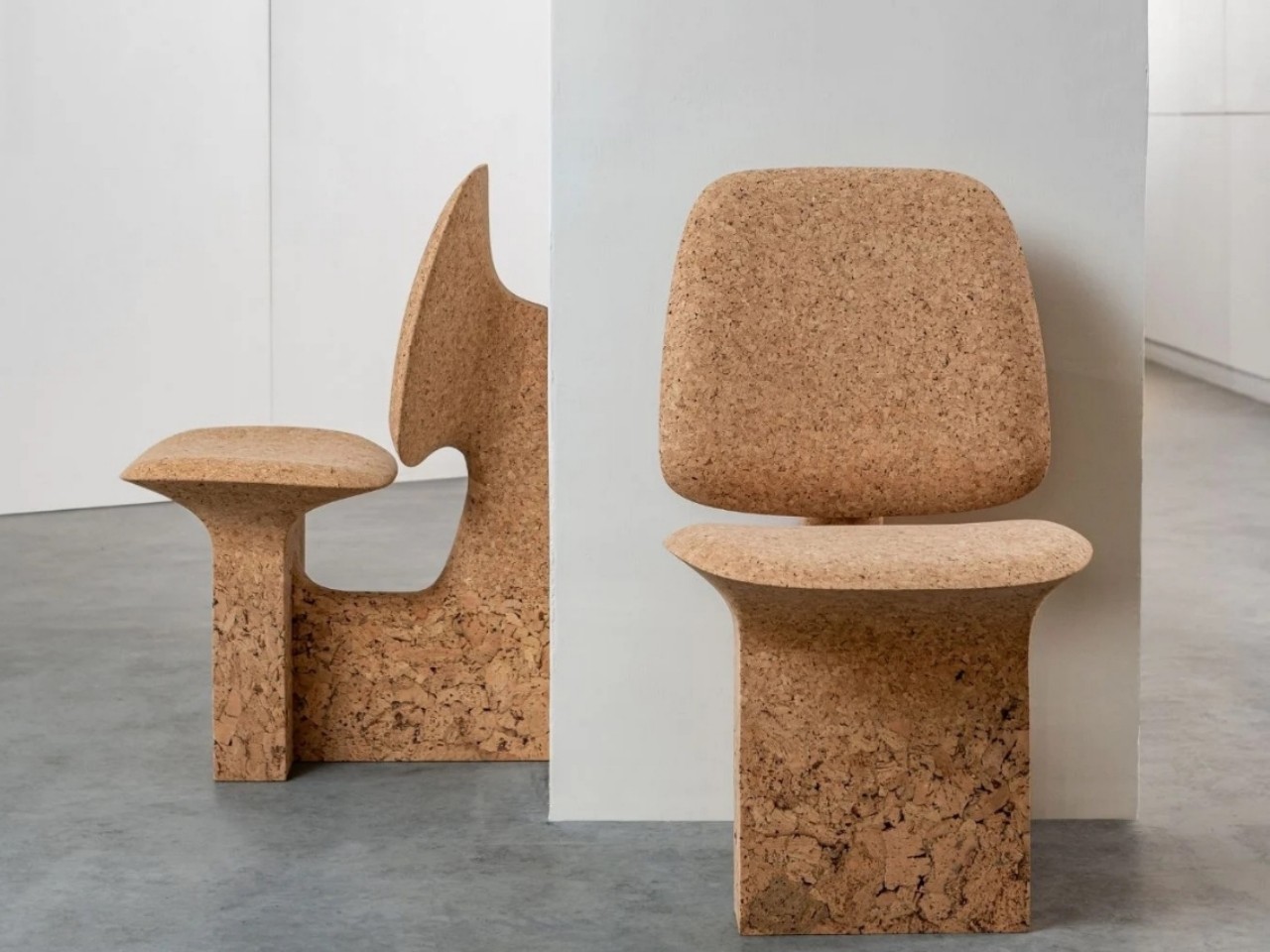

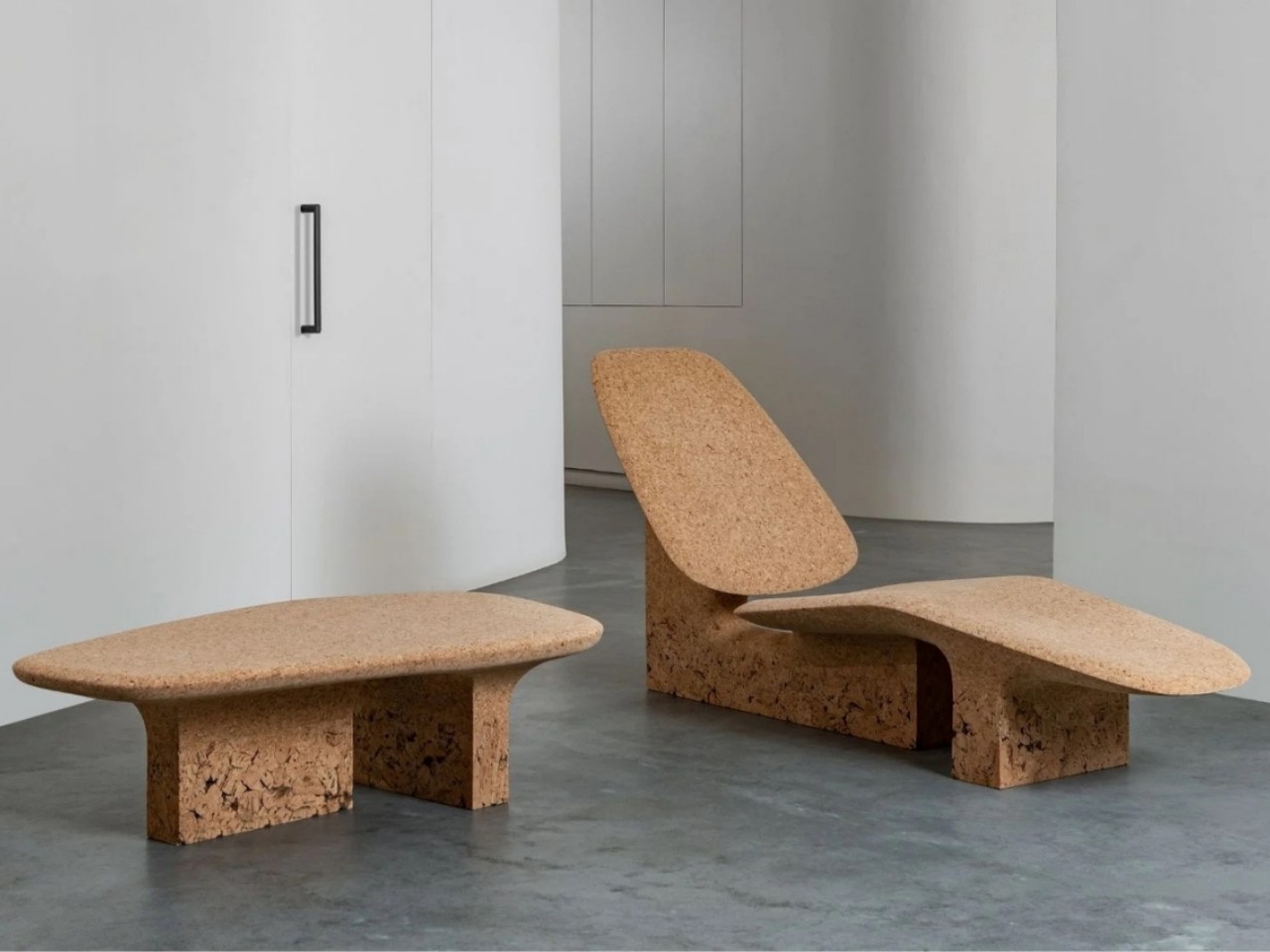
Designer: Noé Duchaufour-Lawrance
The Burnt Cork furniture collection celebrates the resilience of Portuguese cork, with minimalist chairs, tables, and a stool crafted from blocks of blackened cork. Inspired by the forest fires of 2017 in Portugal, these pieces blend functionality with sculptural beauty, making them ideal for display in any living or dining space. With a gradual transition from rigid bases to curved forms, the chairs offer both comfort and aesthetic appeal. The eclectic shape of the stool adds an artistic flair to any room, making the Burnt Cork collection a testament to the enduring beauty and strength of cork as a furniture material.
2. Lighting
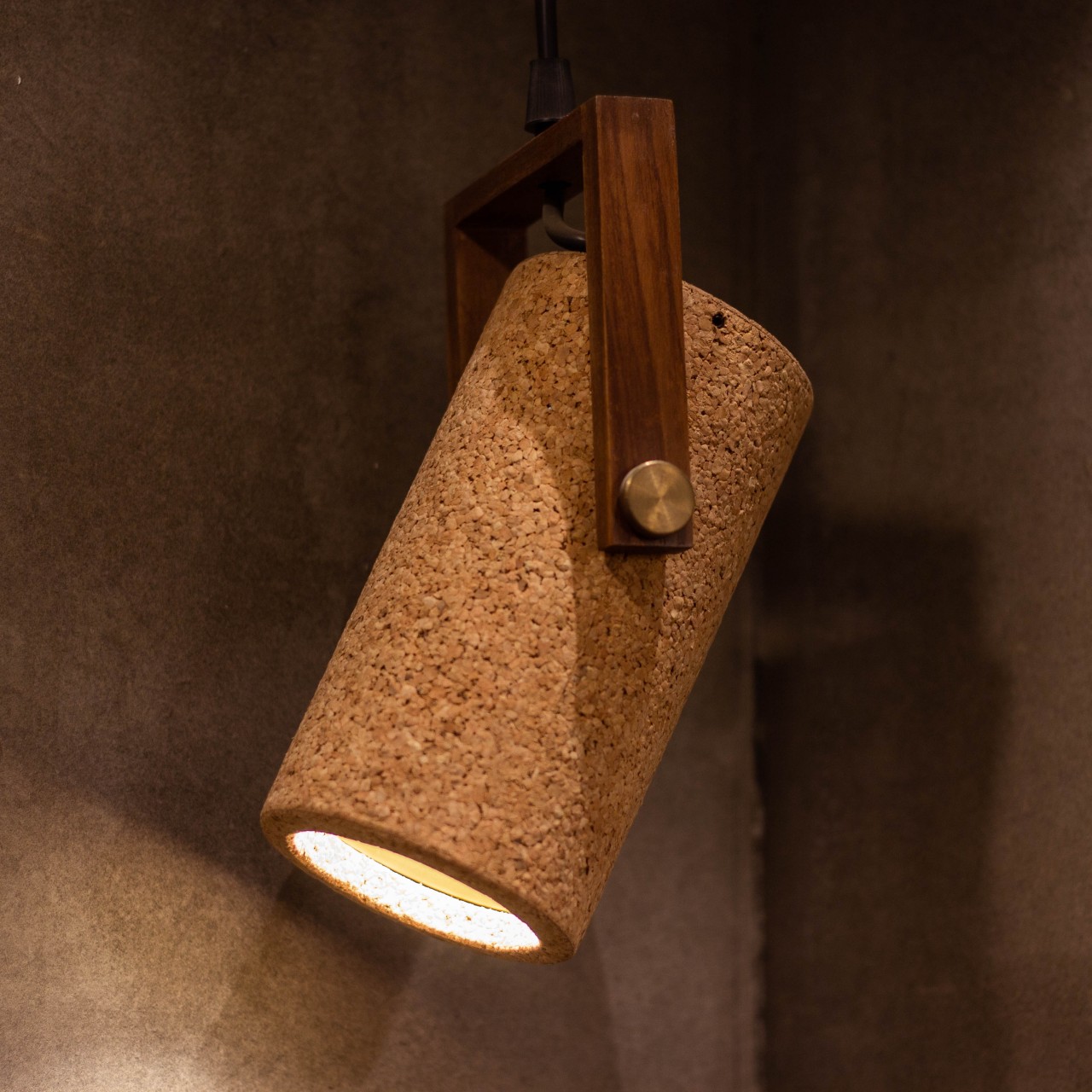
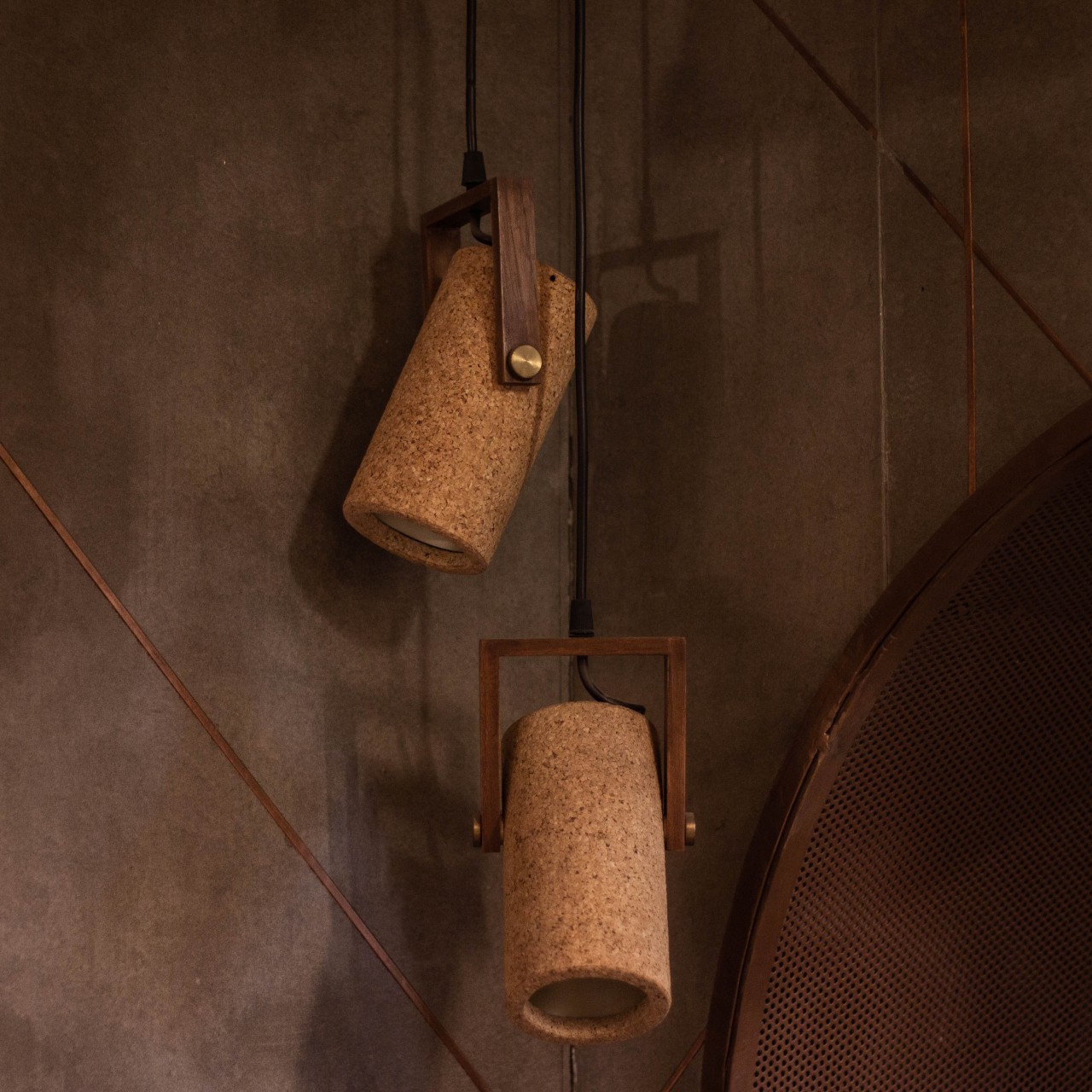
Designer: Oorjaa
Taking cues from modern design, this LED hanging pivot lamp, meticulously crafted from lightweight cork and accented with teak wood and brass fittings, creates the perfect ambiance for both work and leisure in corporate offices and residential spaces.
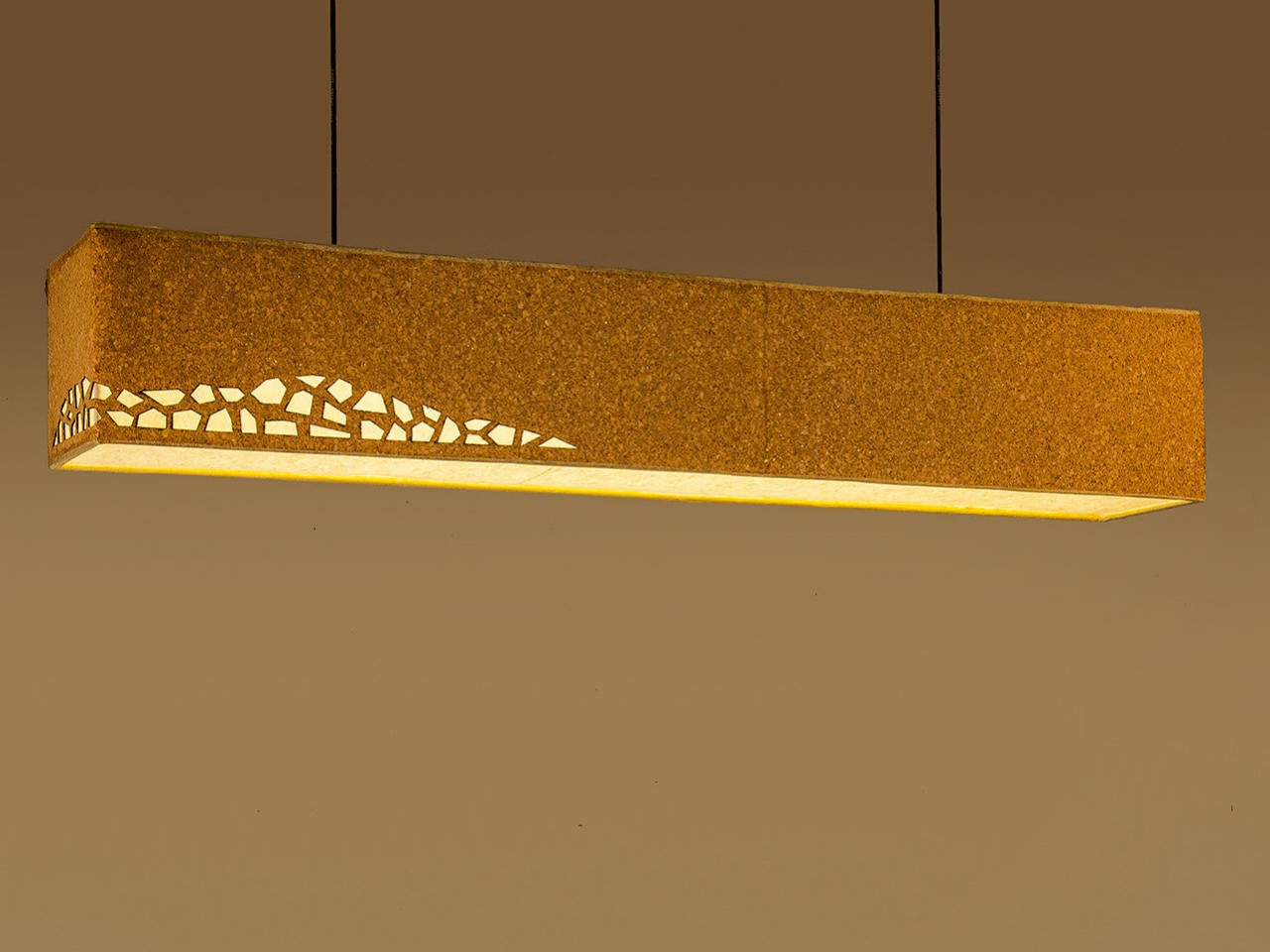
Transforming a traditionally industrial material, this LED hanging fragment box lamp, skillfully crafted from laser-cut lightweight cork, offers gentle illumination ideal for residential and hospitality environments.
3. Acoustic Panels
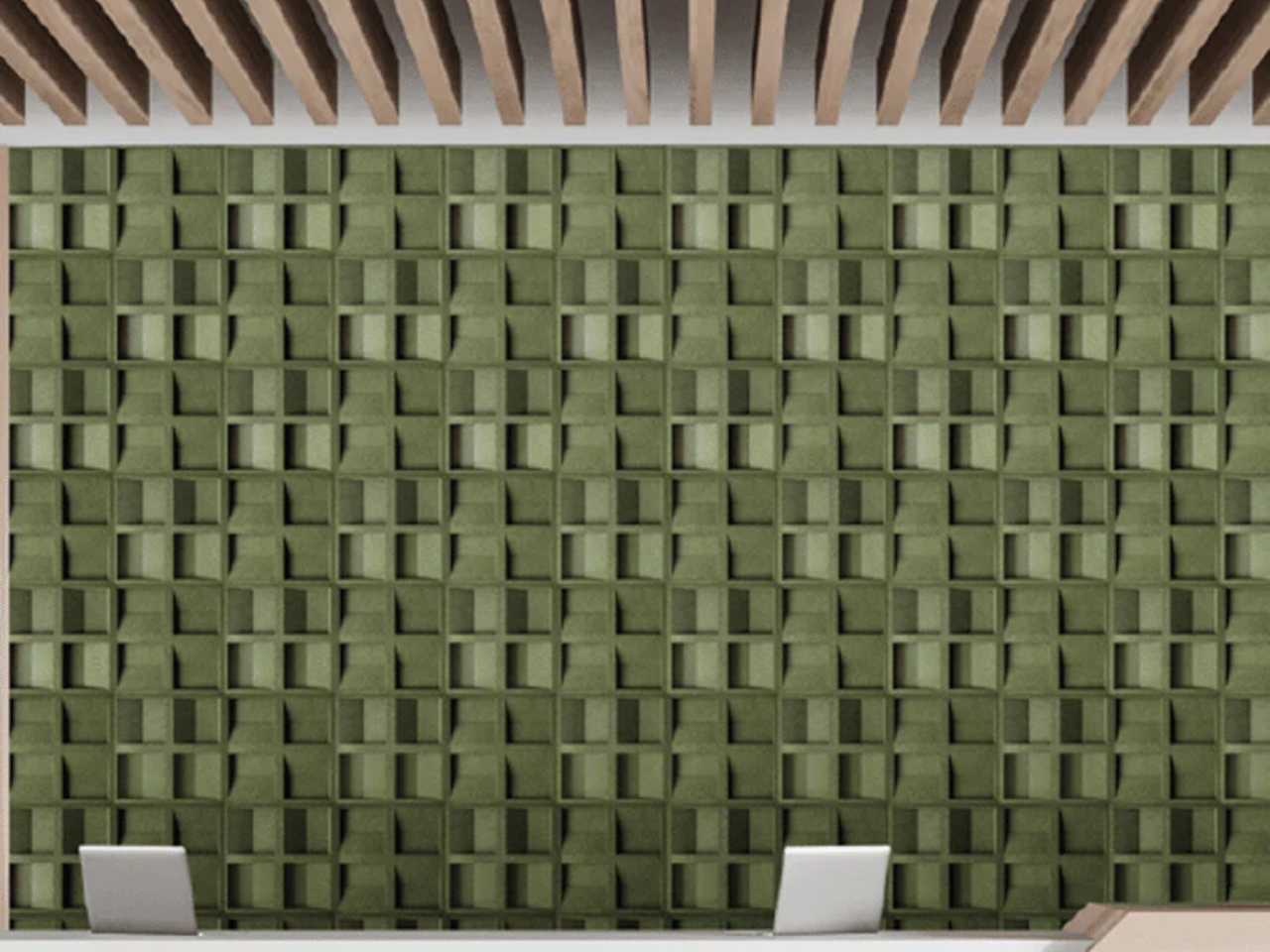
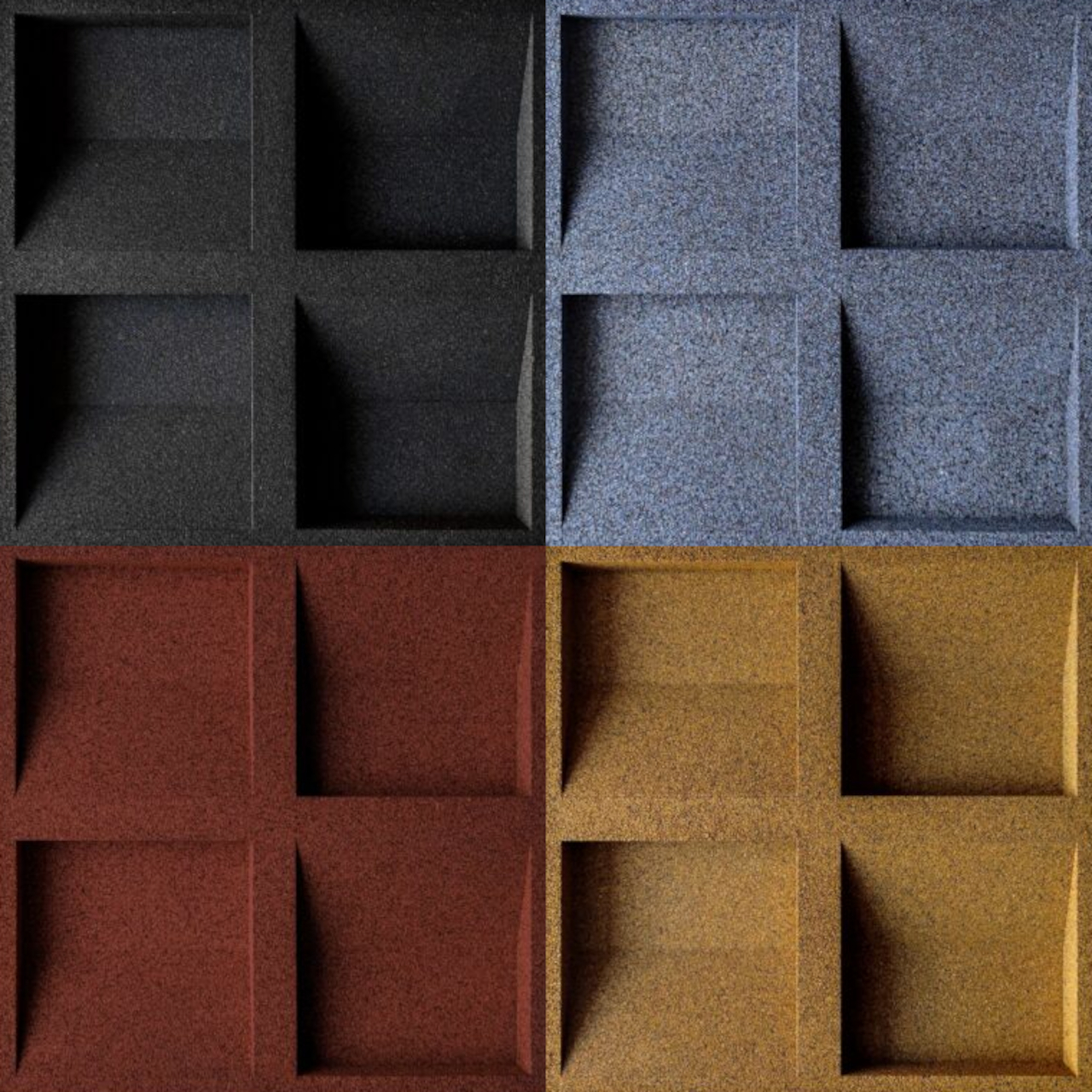
Designer: ClearSound Acoustics
Corkbee Concave presents acoustic wall panels that allow for unique wall designs. These panels effectively absorb sound and regulate environmental conditions. Made from recycled materials and recyclable themselves, they are sustainable and provide a natural and eco-friendly solution to improve sound quality in any space.
4. Flooring
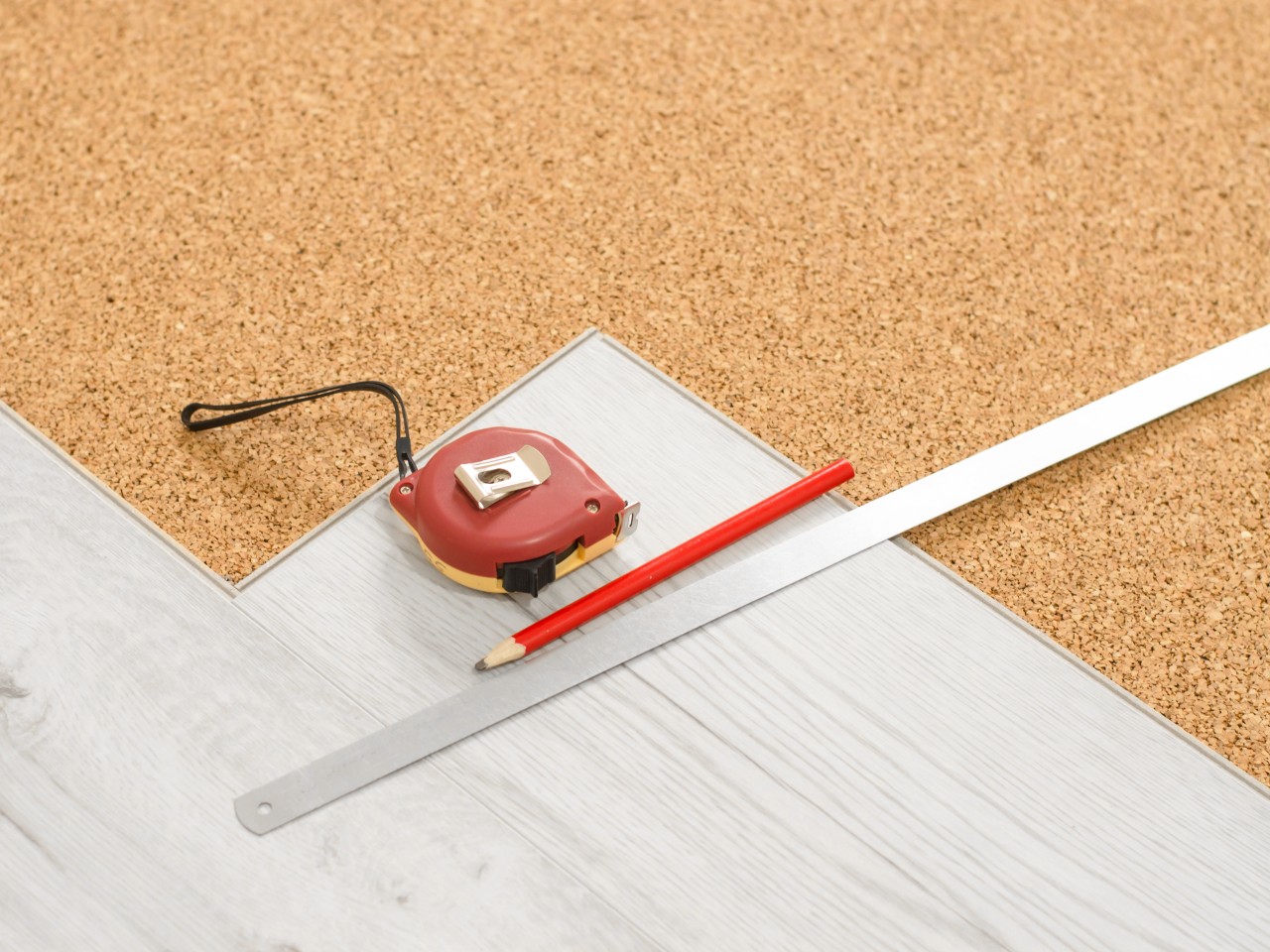
Image courtesy of: oleksandrsh
Cork flooring is increasingly popular due to its numerous benefits. It offers shock absorption and comfort, lasting up to 40 years with proper maintenance. Additionally, Cork floors resist mold, mildew, termites, and dust, making them hypoallergenic. Their natural variations in tone and texture provide unique aesthetics. Cork floors can be dyed or stained, hold warmth, muffle sound, and are fire-resistant.
5. Home Goods
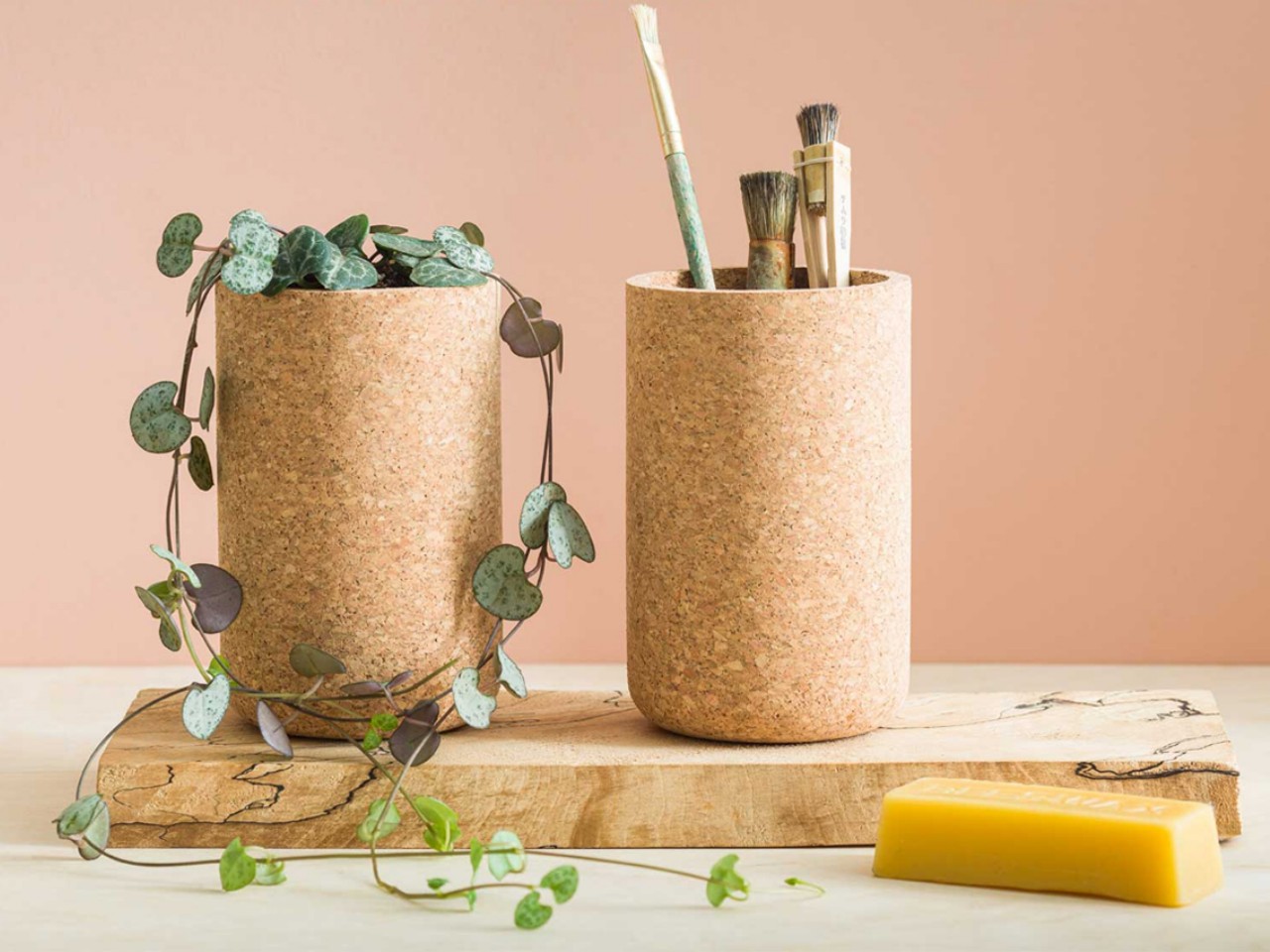

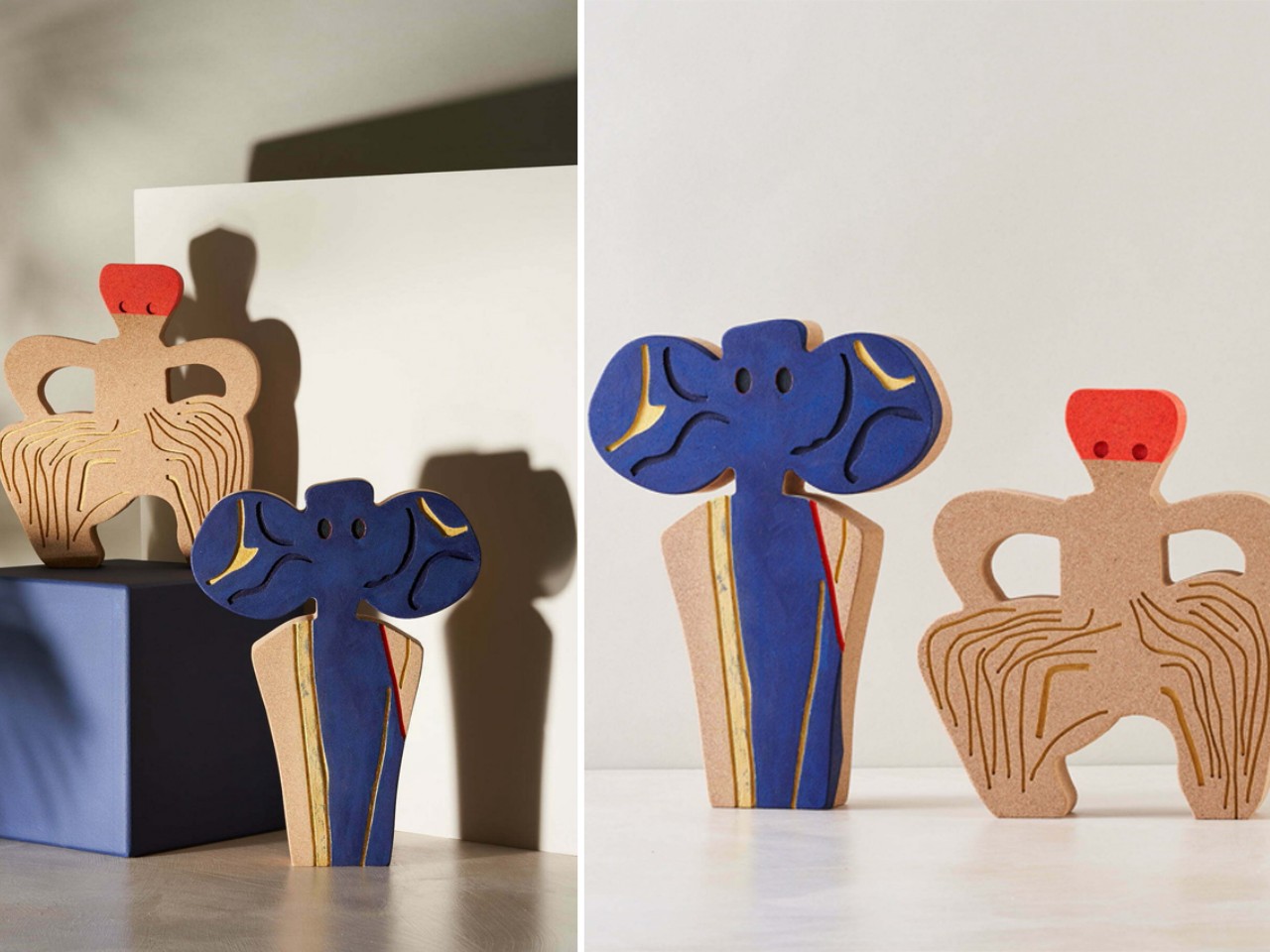
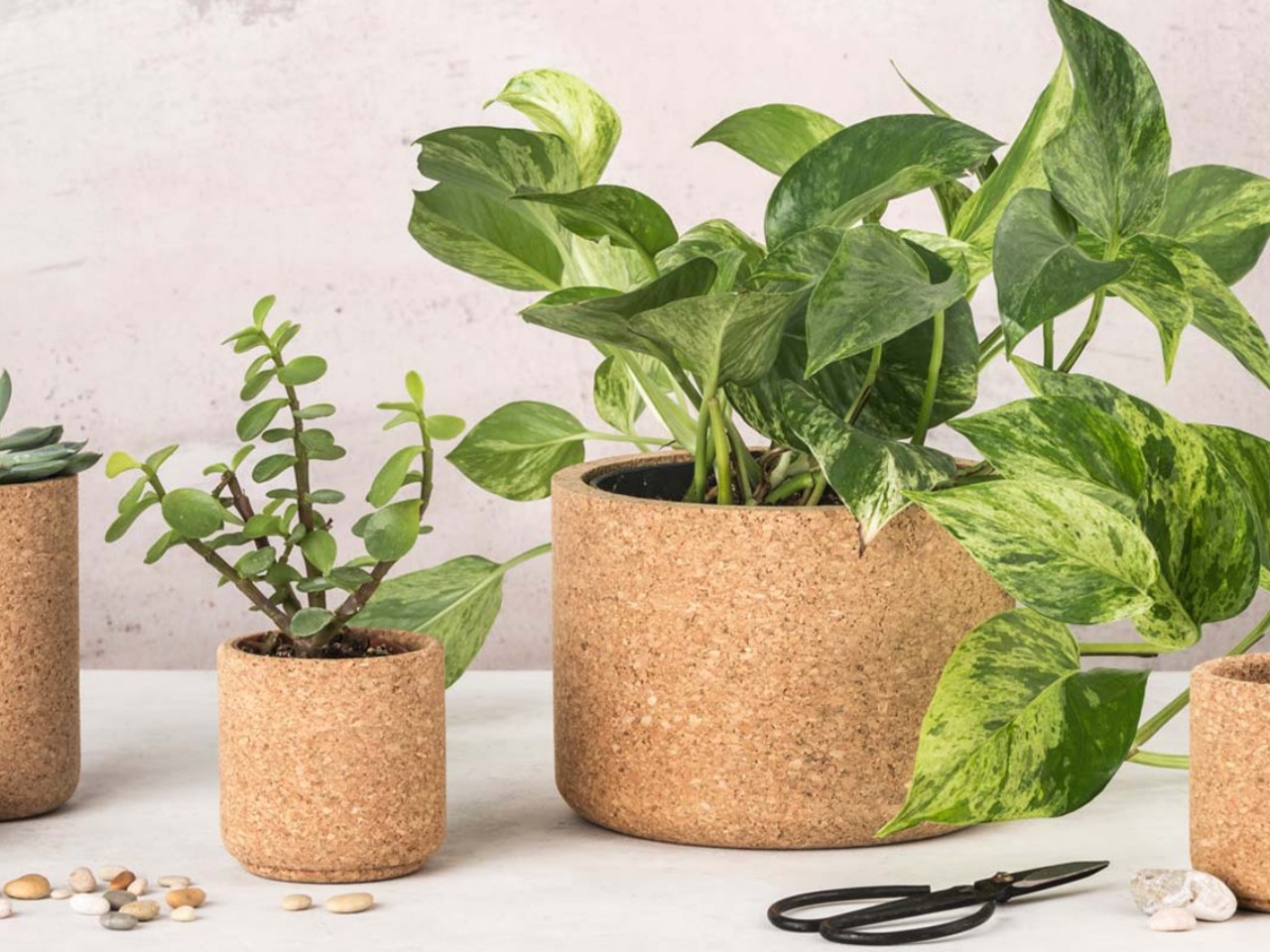
Designer: Mind the Cork
Mind the Cork offers a stylish collection of home goods crafted from sustainable cork. From hanging planters to cylindrical storage vessels, each piece is designed with eco-consciousness in mind. Founder Jenny Espirito Santo’s passion project has evolved into a line of practical yet minimalist products, including planters, dishware, and storage containers. Sourced from cork oak trees, this biodegradable material undergoes a regenerative harvesting process every decade, ensuring its sustainability. Collaborating with artisans in the UK and Portugal, Mind the Cork delivers functional and environmentally friendly items for modern homes.
6. Cladding
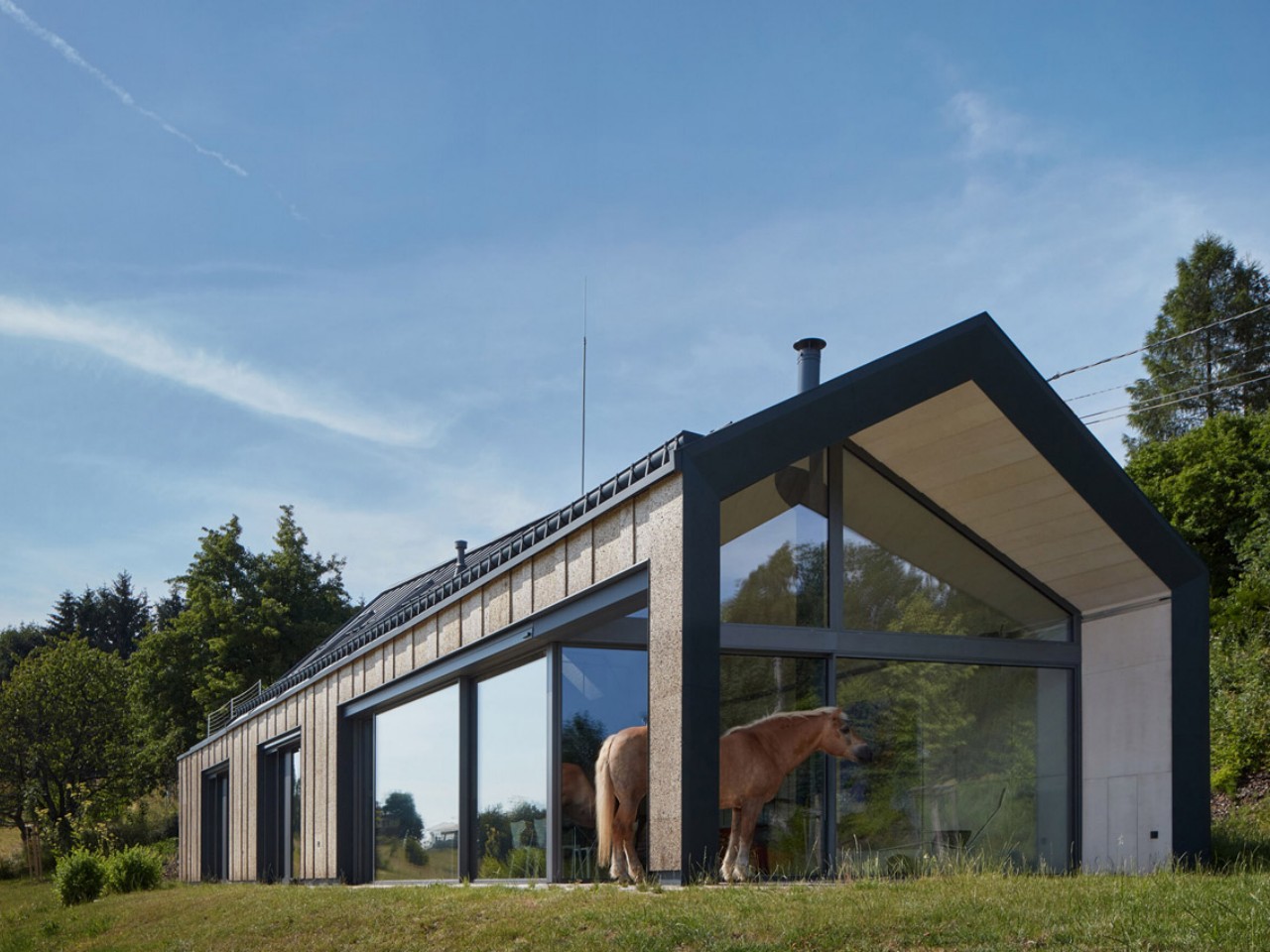
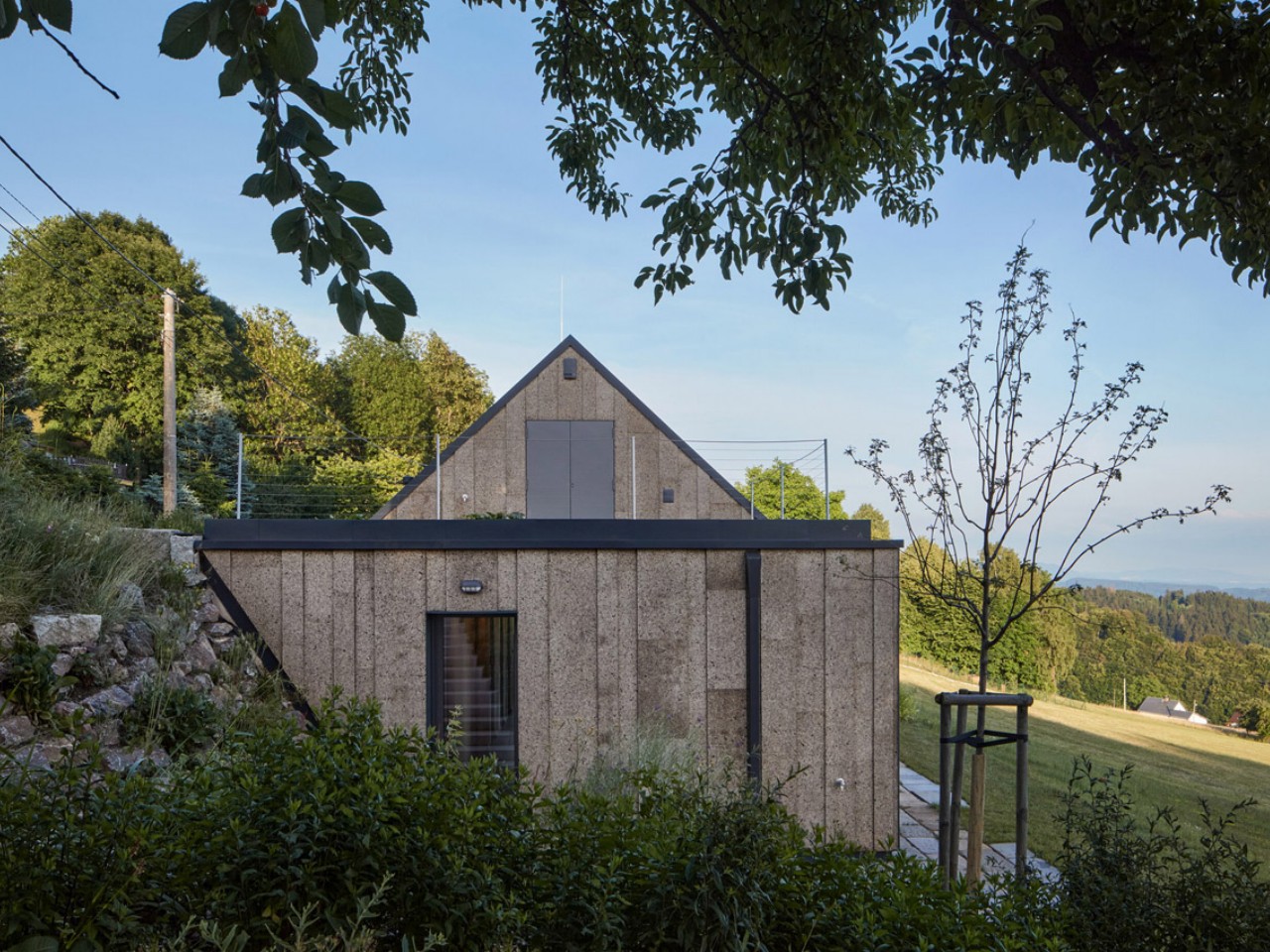
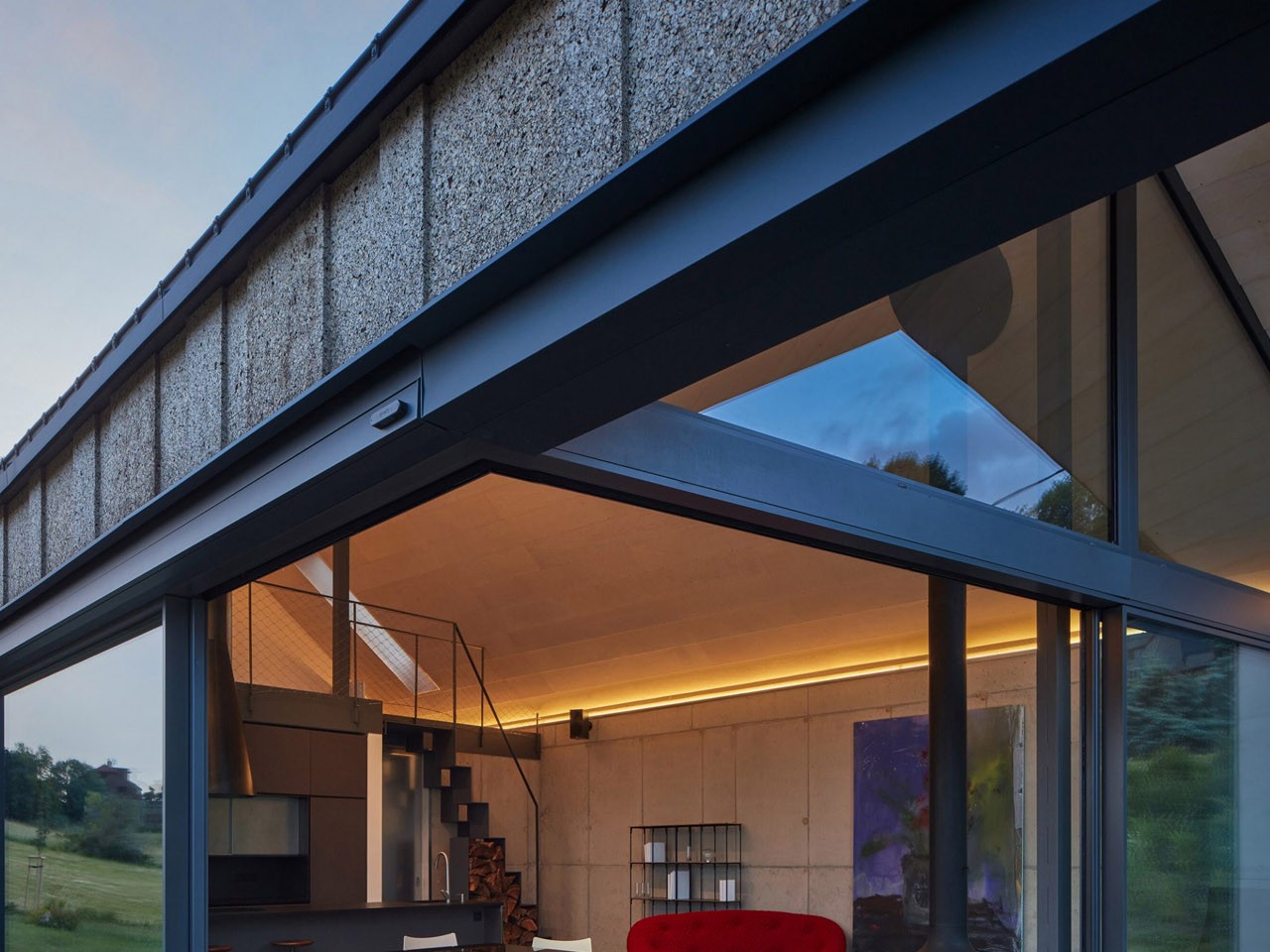
Designer: Atelier SAD and Iveta Zachariášová
This family home in the Czech countryside, designed by Atelier SAD and interior designer Iveta Zachariášová, is clad in cork for its weather-resistant and thermal properties. Situated near Rašovka at the foot of the Ještěd Ridge, the residence integrates seamlessly into the landscape of the Bohemian Paradise Protected Landscape Area. With its sleek design, gabled aluminum roof, and innovative use of Portuguese expanded cork, this home embodies modernity and sustainability. This stunning residence showcases the beauty and functionality of cork as a building material, creating a harmonious blend of architecture and nature.
7. Product Design
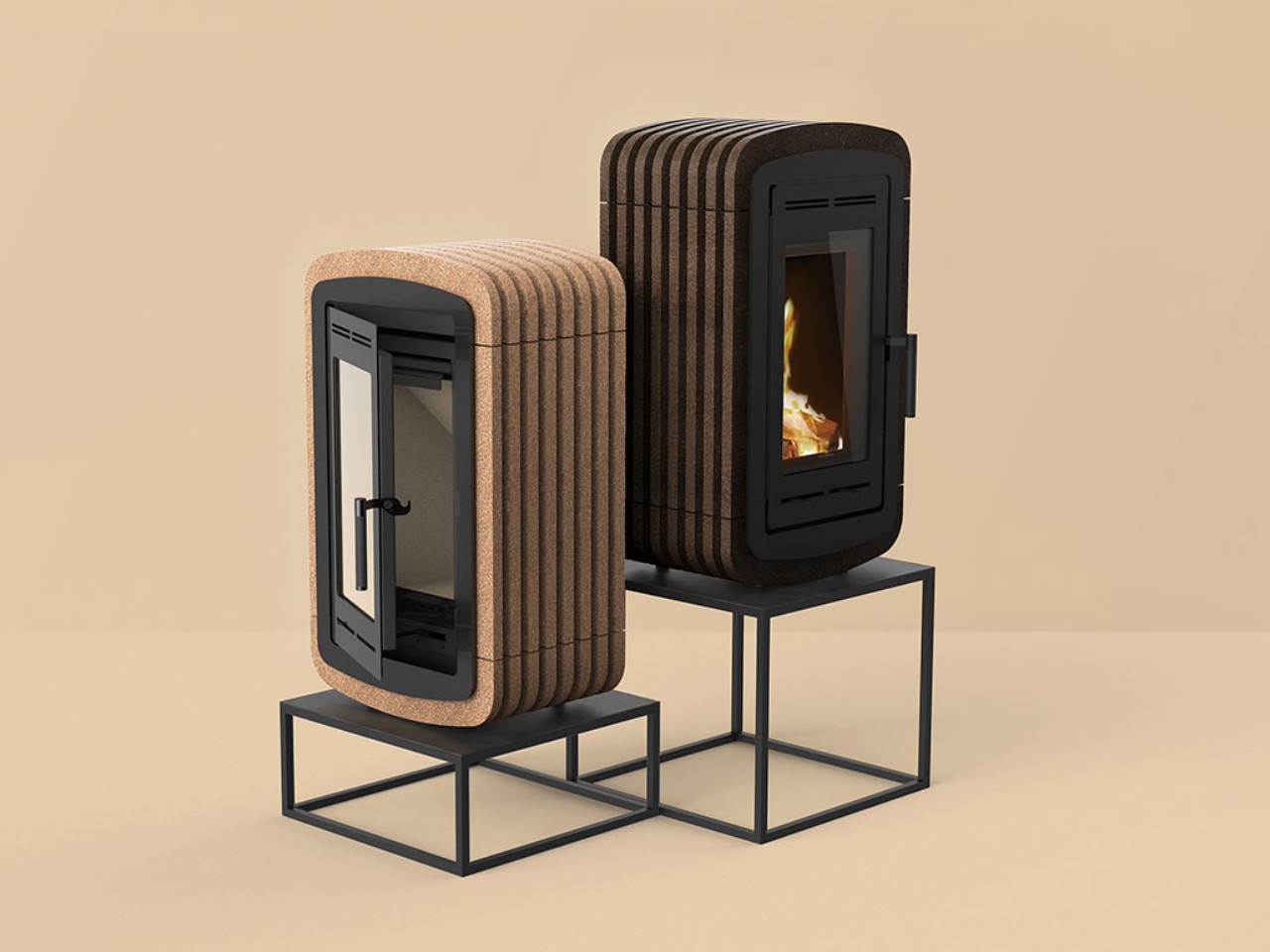
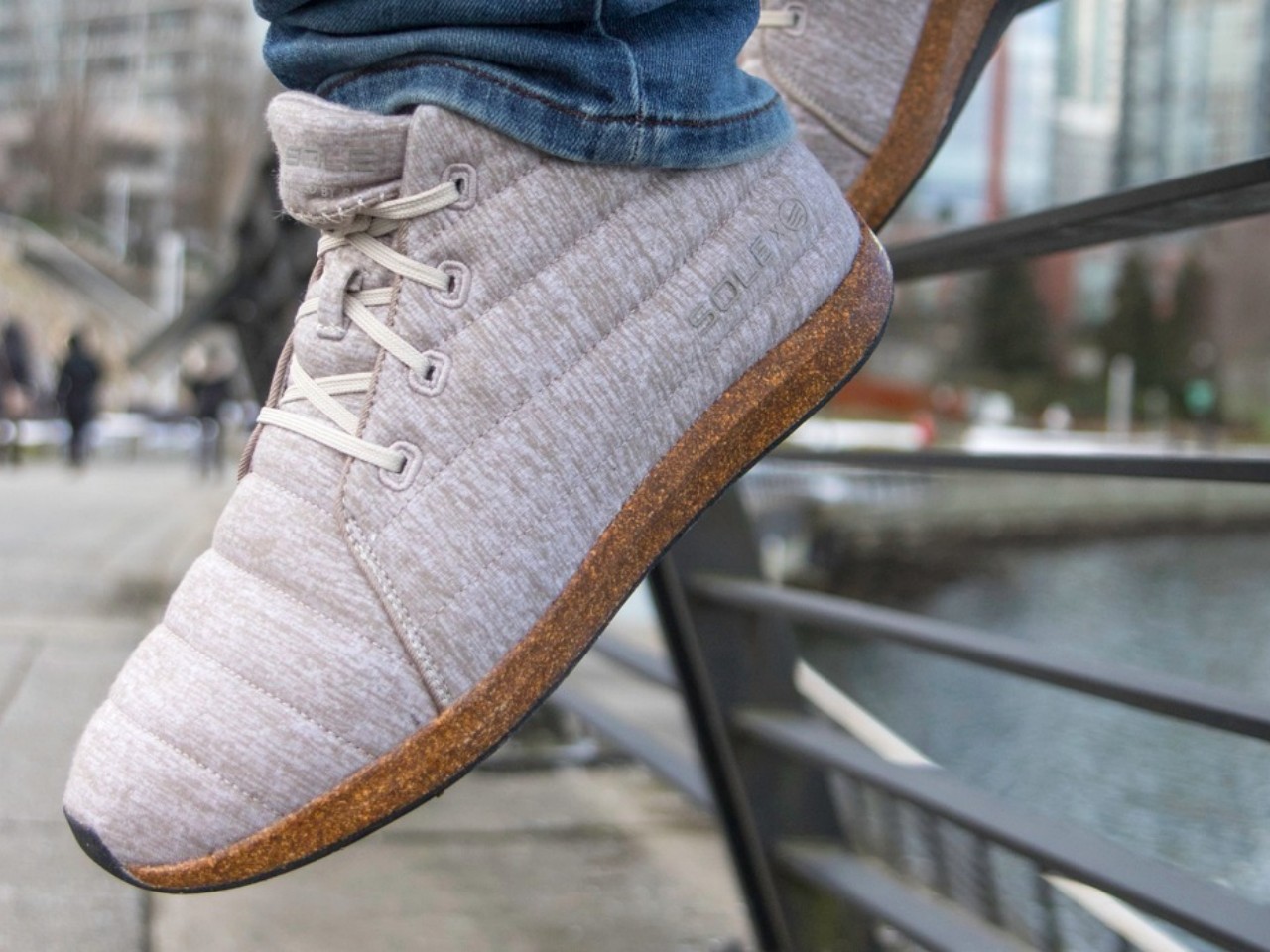
Designers: Assorted
Cork, a preferred material in product design, is prominently featured in the INNGAGE woodstove. Its main body, made of steel, incorporates cork profiles fixed at a distance from the structure to prevent darkening over time. Additionally, the cork acts as a safety layer, allowing users to touch and feel the stove securely.’
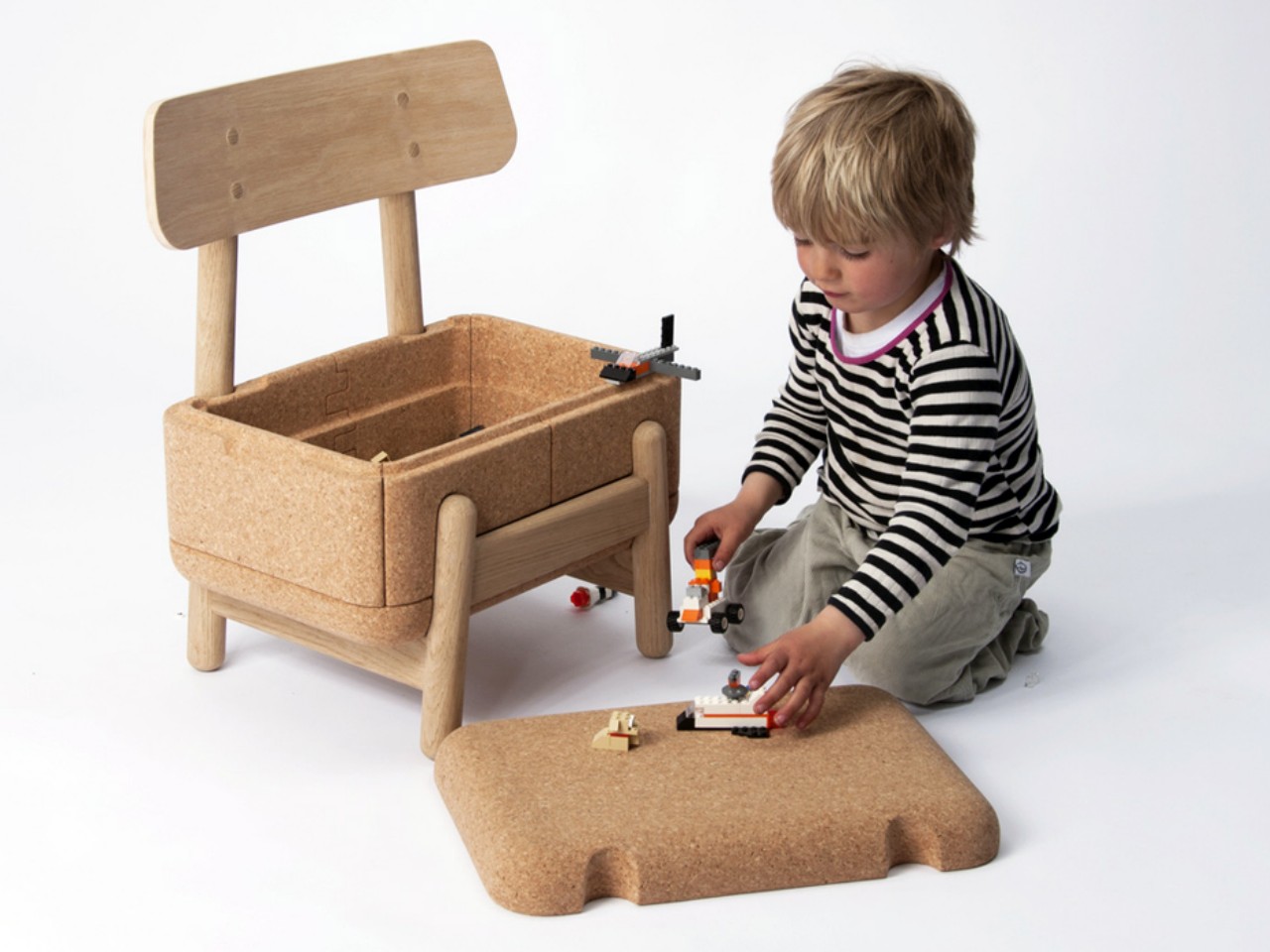
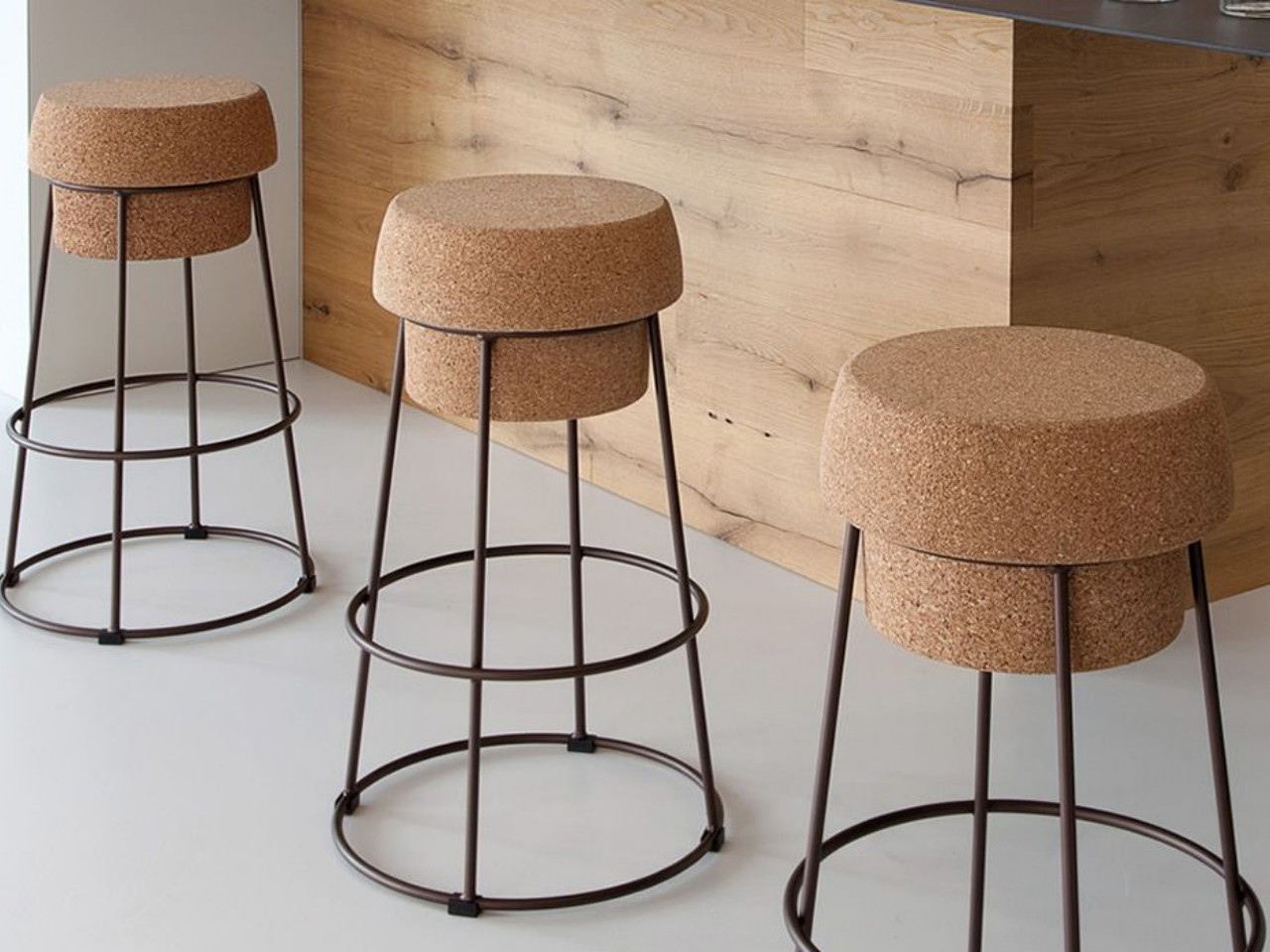
In conclusion, cork stands out as a remarkable material celebrated for its biodegradability, sustainability, and versatility. As we explore cork’s potential further, it embodies a dedication to environmentally friendly design and conscious consumption.





